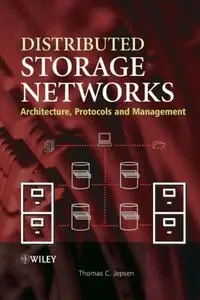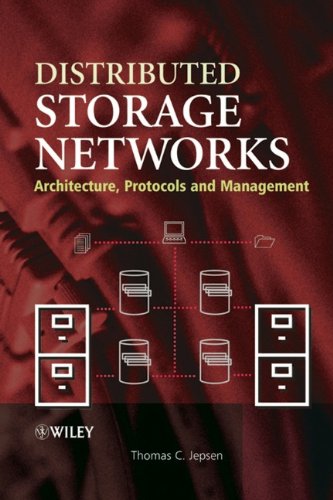Distributed Storage Networks: Architecture, Protocols and Management by Thomas C. Jepsen
English | Nov. 21, 2003 | ISBN: 0470850205 | 340 Pages | PDF | 3 MB
English | Nov. 21, 2003 | ISBN: 0470850205 | 340 Pages | PDF | 3 MB
The worldwide market for SAN and NAS storage is anticipated to grow from US $2 billion in 1999 to over $25 billion by 2004. As business-to-business and business-to-consumer e-commerce matures, even greater demands for management of stored data will arise. With the rapid increase in data storage requirements in the last decade, efficient management of stored data becomes a necessity for the enterprise. A recent UC-Berkeley study predicts that 150,000 terabytes of disk storage will be shipped in 2003.Most financial, insurance, healthcare, and telecommunications institutions are in the process of implementing storage networks that are distributed to some degree. For these institutions, data integrity is critical, and they will spend much time and money on planning. One of the primary obstacles to implementing a storage network cited by enterprise IT managers is a lack of knowledge about storage networking technology and the specific issues involved in extending a Storage Area Network (SAN) or Network Attached Storage (NAS) over the Metropolitan Area Networks (MAN) or Wireless Area Networks (WAN)." Distributed Storage Networks: Architecture, Protocols and Management" addresses the "terminology gap" between enterprise network planners and telecommunications engineers, who must understand the transport requirements of storage networks in order to implement distributed storage networks. Jepsen comprehensively provides IT managers, planners, and telecommunications professionals with the information they need in order to choose the technologies best suited for their particular environment.This book addresses a hot topic that will become increasingly important in the coming years. It enables high-level managers and planners to make intelligent decisions about network needs. It includes example network configurations providing solutions to typical user scenarios. It is a fundamental resource for all network managers, planners and network design engineers, as well as telecommunications engineers and engineering, computer science, and information technology students.



